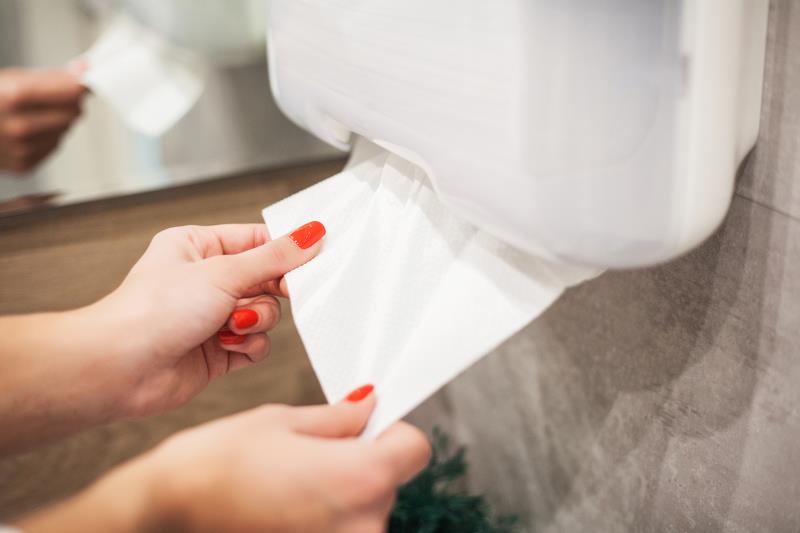
Using paper towels for drying hands is more effective than using a jet air dryer in curbing microbial spread to environmental surfaces, suggests a small study.
The study was originally slated for release during the ECCMID* 2020 Congress, which has been cancelled due to COVID-19 outbreak.
“We believe that our results are relevant to the control of the novel coronavirus that is spreading at pace worldwide. Paper towels should be the preferred way to dry hands after washing and so reduce the risk of virus contamination and spread,” according to the researchers.
In the study, bacteriophage preparation of 107 pfu/mL was spread on the hands of four volunteers to simulate viral contamination. Bacteriophage, a virus that infects bacteria, is harmless to humans. Participants then dried their hands using either paper towels or a jet dryer in a hospital public toilet. Swab samples of environmental surfaces from public and ward areas were collected for PCR testing of presence of bacteriophage. [ECCMID 2020, abstract 7047]
Both methods of hand drying significantly reduced phage contamination of hands compared with the stock preparation, regardless of whether paper towels or jet dryer were used (reduction, 2.2 and 3.3 log10 copies/μL, respectively; p<0.05).
However, paper towels reduced environmental contamination from surface contact with the contaminated hands to a significantly greater extent than jet dryer. Among the 11 surfaces sampled, all were positive for phage contamination following hand drying with jet dryer, while only six surfaces were tested positive after using paper towels.
Moreover, average surface contamination was more than 10-fold greater following hand contact after jet dryer use vs paper towel use (4.1 vs 3.0 log10 copies/μL).
The surfaces sampled included doors, stethoscope, phones, stair handrails, lift buttons, intercom buttons to access wards, armchairs, and aprons worn by the volunteers to assess body/clothing contamination during drying.
The researchers found that phage transfer to apron/clothing was five times more likely following use of jet dryer compared with paper towels (3.5 vs 2.8 log10 copies/μL). In addition, phage transfer from body to armchairs was detected following use of jet dryer (average 3.2 log10 copies/μL), but not paper towels.
This suggests that the microbes can transfer to environmental surfaces directly from contaminated hands or indirectly from a person's body which has been cross-contaminated during hand drying, the researchers noted.
“There are clear differences, according to hand drying method, in the residual microbial contamination of the subject's hands and body,” the researchers pointed out.
“Crucially, these differences in contamination translate into significantly greater levels of microbe contamination after jet air drying vs paper towel use from hands and body beyond the toilet/washroom. As public toilets are used by patients, visitors and staff, the hand drying method chosen has the potential to increase (using jet dryers) or reduce (using paper towels) pathogen transmission in hospital settings,” they added.